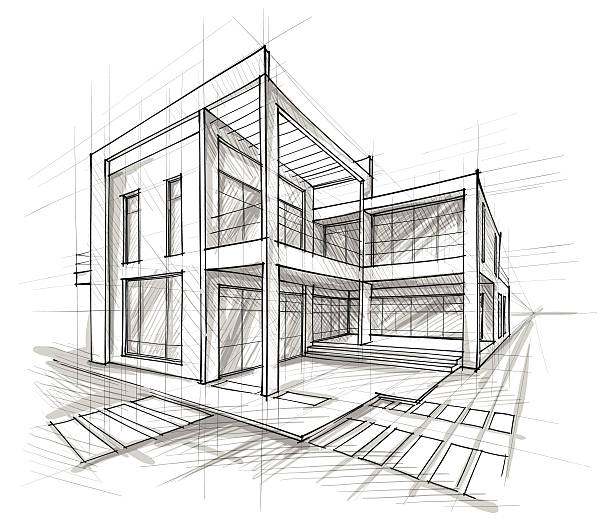Leading Reasons to Choose CDA Architects for Your Residential or Commercial Layouts
Leading Reasons to Choose CDA Architects for Your Residential or Commercial Layouts
Blog Article
A Thorough Summary of Building Designs and Their Impact on Modern City Planning and Development
Building designs have actually long served as a mirror to the social values and technological innovations of their time, playing an important role in forming contemporary city planning and growth. From the splendour of Neoclassicism to the utilitarian technique of Brutalism, each design has presented distinct concepts that affect urban aesthetics and capability.
Historic Review of Architectural Styles

As cultures transitioned through the Middle Ages, Gothic architecture arised, defined by its verticality and elaborate detailing, matching the spiritual goals of the era. The Renaissance marked a revival of timeless suitables, merging art and style in ingenious ways that influenced succeeding designs throughout Europe.

Today, building designs remain to progress, driven by globalization and sustainability problems, reflecting a dynamic interaction between heritage and technology. This historical summary emphasizes the significance of architecture as a mirror of social advancement and as a catalyst for metropolitan growth.
Trick Architectural Styles Explained
The diversity of architectural styles shows the myriad impacts that form our built environment, each embodying unique attributes and social importances. Trick building designs consist of Classical, Gothic, Baroque, Modernism, and Postmodernism, each representing unique historical contexts and aesthetic viewpoints.
Classic design, rooted in ancient Greece and Rome, highlights balance, proportion, and the usage of columns (cda architects). In comparison, Gothic design, growing in the center Ages, is identified by sharp arcs, ribbed vaults, and flying buttresses, producing an aerial quality in basilicas. Baroque design, emerging in the 17th century, is marked by grandeur, elaborate ornamentation, and a dynamic interplay of light and shadow
Innovation, which obtained energy in the early 20th century, prioritizes function over kind, making use of brand-new products like steel and glass to produce minimalist frameworks. Postmodernism, responding against the austerity of Modernism, welcomes eclecticism and historic referral, commonly integrating playful elements and irony.

Influence On Urban Preparation
In shaping the development of cities, architectural designs dramatically affect urban planning decisions. news The choice of architectural style often dictates the aesthetic appeals, capability, and total personality of city environments.
Additionally, architectural styles can impact zoning policies and land use policies. Urban planners should think about the prevailing architectural trends when designing districts, ensuring that brand-new growths harmonize with existing structures. This consideration cultivates natural metropolitan landscapes and improves community identity.
The implementation of certain architectural styles can additionally affect socioeconomic aspects within a city. High-end modern styles may bring in affluent homeowners and services, leading to gentrification, while much more budget-friendly housing solutions might focus on useful and lasting styles to suit varied populaces. cda architects. Ultimately, the interaction between building styles and metropolitan planning this page produces dynamic cities that mirror both historical context and modern needs, forming the lived experiences of their residents
Sustainability and Modern Style
Architectural designs play a crucial role in resolving contemporary difficulties, specifically in the realm of sustainability. As metropolitan locations increase and environmental issues magnify, Read Full Report contemporary architecture progressively welcomes lasting design concepts that focus on energy performance, source conservation, and very little eco-friendly impact.
Contemporary architectural activities, such as biophilic design and eco-friendly architecture, supporter for frameworks that harmonize with their surroundings, making use of all-natural materials and promoting biodiversity. These designs usually incorporate renewable energy resources, such as photovoltaic panels and wind generators, to reduce reliance on fossil fuels and reduced carbon impacts.
Additionally, the combination of innovative innovations, such as wise structure systems, boosts energy monitoring, enhancing resource use while making certain owner convenience. Innovative water administration methods, consisting of rain harvesting and greywater recycling, additional add to lasting metropolitan atmospheres.
Significantly, sustainability expands past ecological worries; it incorporates social and financial measurements also. By cultivating neighborhood wellness and promoting inclusivity, modern-day building designs line up with sustainable development objectives. Subsequently, the development of architectural methods continues to shape resistant cities that not just satisfy the needs of the present however likewise protect the future for generations ahead.
Community Involvement in Layout
Neighborhood engagement in layout serves as an important bridge between engineers and the populaces they serve, making sure that the built setting shows the demands and ambitions of its users. This joint procedure welcomes community participants to contribute their insights and choices, promoting a feeling of possession and duty toward the rooms they occupy.
Effective neighborhood involvement utilizes numerous techniques, such as workshops, surveys, and public discussion forums, to gather varied perspectives. These techniques facilitate a two-way discussion, enabling architects to comprehend neighborhood contexts while empowering citizens to voice their issues and needs. This inclusivity not only improves the layout high quality yet also promotes social equity by attending to the unique difficulties dealt with by marginalized teams.
In addition, area interaction can lead to cutting-edge solutions that might not arise in a standard layout procedure. By integrating neighborhood knowledge and cultural worths, designers can produce rooms that reverberate even more deeply with users, enhancing usability and sustainability. Eventually, focusing on neighborhood involvement in layout processes results in environments that nurture social interactions, support health, and enhance neighborhood connections, therefore playing a pivotal function fit modern metropolitan landscapes.
Final Thought
Building styles have exceptionally influenced contemporary city planning and growth, showing progressing social and technological contexts. The combination of historical appearances with modern demands cultivates metropolitan atmospheres that prioritize sustainability and community engagement. As cities continue to expand and adjust, the continuous dialogue in between building heritage and modern-day style principles will continue to be essential in developing comprehensive, lively areas that enhance lifestyle and advertise social equity. The future of metropolitan advancement hinges on this harmonious equilibrium.
Report this page